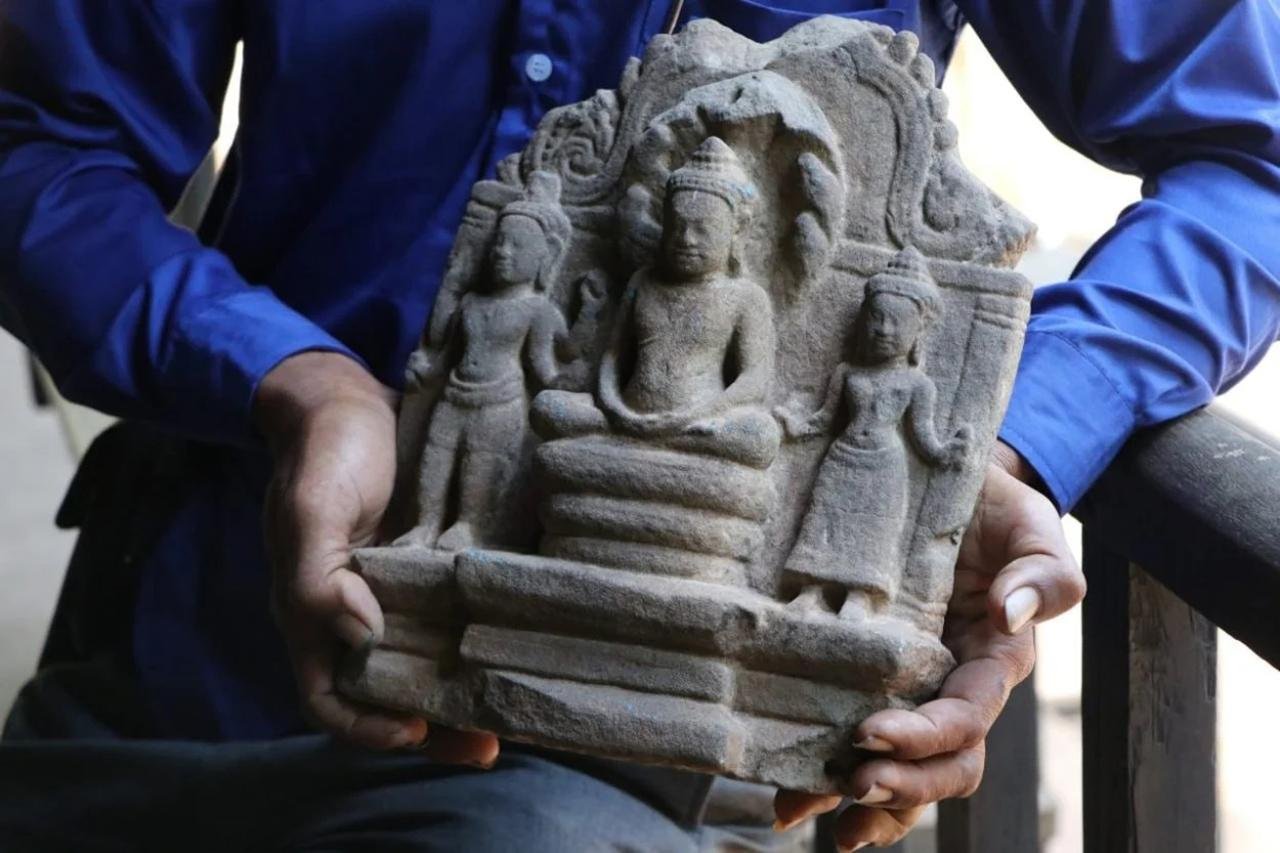A team of experts from the Apsara National Authority (ANA) and the Archaeological Survey of India has uncovered six centuries-old sandstone statues at the Ta Prohm temple restoration site, nestled in the heart of Cambodia’s Angkor Archaeological Park. The find was announced by the ANA in a statement on Thursday.
 Credit: APSARA National Authority
Credit: APSARA National Authority
According to Net Simon, an archaeologist at the ANA’s Department of Conservation of Monuments and Preventive Archaeology, the statues were unearthed beneath the platform of the Southern Gate of Ta Prohm Temple.
The restoration team, working in collaboration with the Archaeological Survey of India, made the discovery as part of their efforts to restore the ancient temple, which was built in the late 12th century under the reign of King Jayavarman VII. The project, initiated in January 2023, encompᴀsses repairs to the 20-meter-long gate and the four faces of Ta Prohm.
The unveiled statues include two depictions of Buddha sheltered by a Naga, two Buddha statues with broken heads and hands, one Avalokitesvara (deity), and one pediment adorned with a carving of Buddha.
Ta Prohm, also known as Rajavihara, stands as a testament to Jayavarman VII’s devotion to Buddhism, with the temple being a Mahayana Buddhist monastery. The temple, constructed in the late 12th and early 13th centuries, fell into abandonment following the collapse of the Khmer Empire in the 15th century, only to be rediscovered by modern archaeologists and gain fame through its inclusion in the “Lara Croft: Tomb Raider” movie in 2001.
Chitranjan Kumar, the restoration project manager at Ta Prohm, stated that the restoration project, utilizing the anastylosis technique, is currently 60% complete and is scheduled for completion next year. This technique involves dismantling the collapsed gate to determine its original foundation, strengthening the foundation, and restructuring the entire gate. Additionally, missing stones have been replaced, and new stones have been added to support the original structure.
The APSARA National Authority, overseeing the Angkor Archaeological Park, reported that the statues were discovered in mid-November during the gathering of scattered stones for the ongoing reconstruction of the south gate.
Neth Simon said that more ancient artifacts, similar to those found under the platform of the southern gate, may still be buried in the Angkor Archaeological Park. As the restoration project unfolds, it provides an opportunity to unearth and preserve Cambodia’s rich cultural heritage.
Reflecting on the popularity of the Angkor Archaeological Park, which attracted around 700,000 international tourists during the January-November period, the state-owned Angkor Enterprise reported a gross revenue of 32.5 million U.S. dollars from ticket sales.
The park, inscribed on the UNESCO World Heritage List in 1992, continues to captivate visitors with its old trees growing amidst the ruins, surrounded by the towering jungle.





